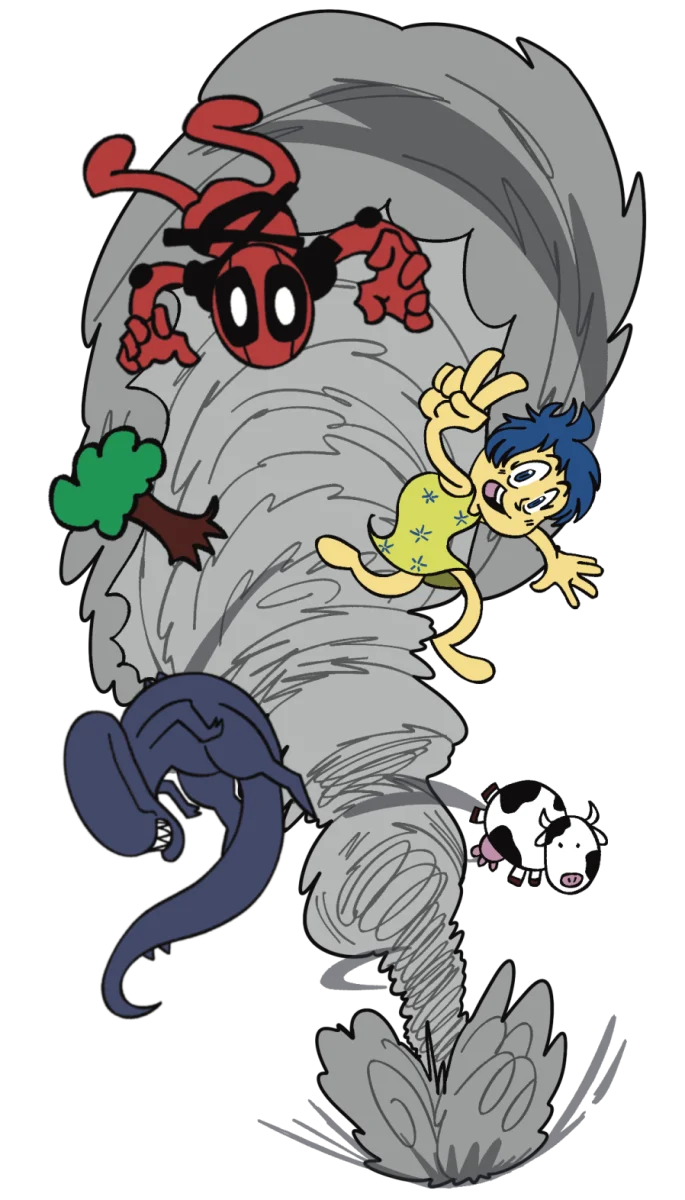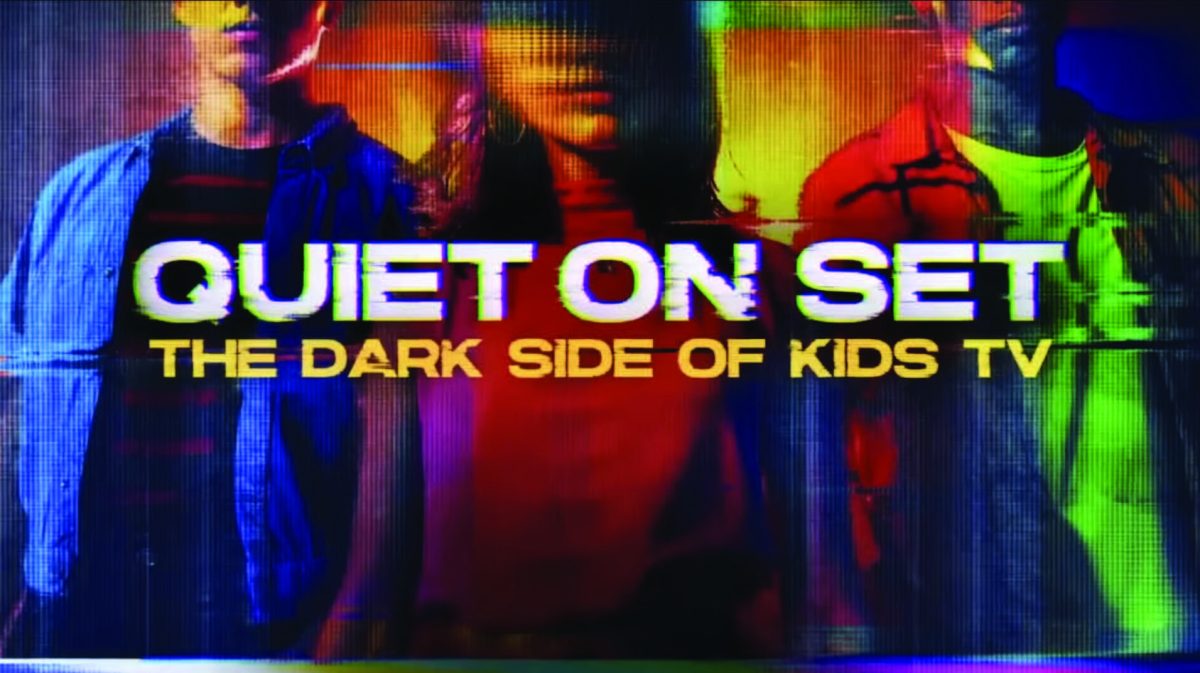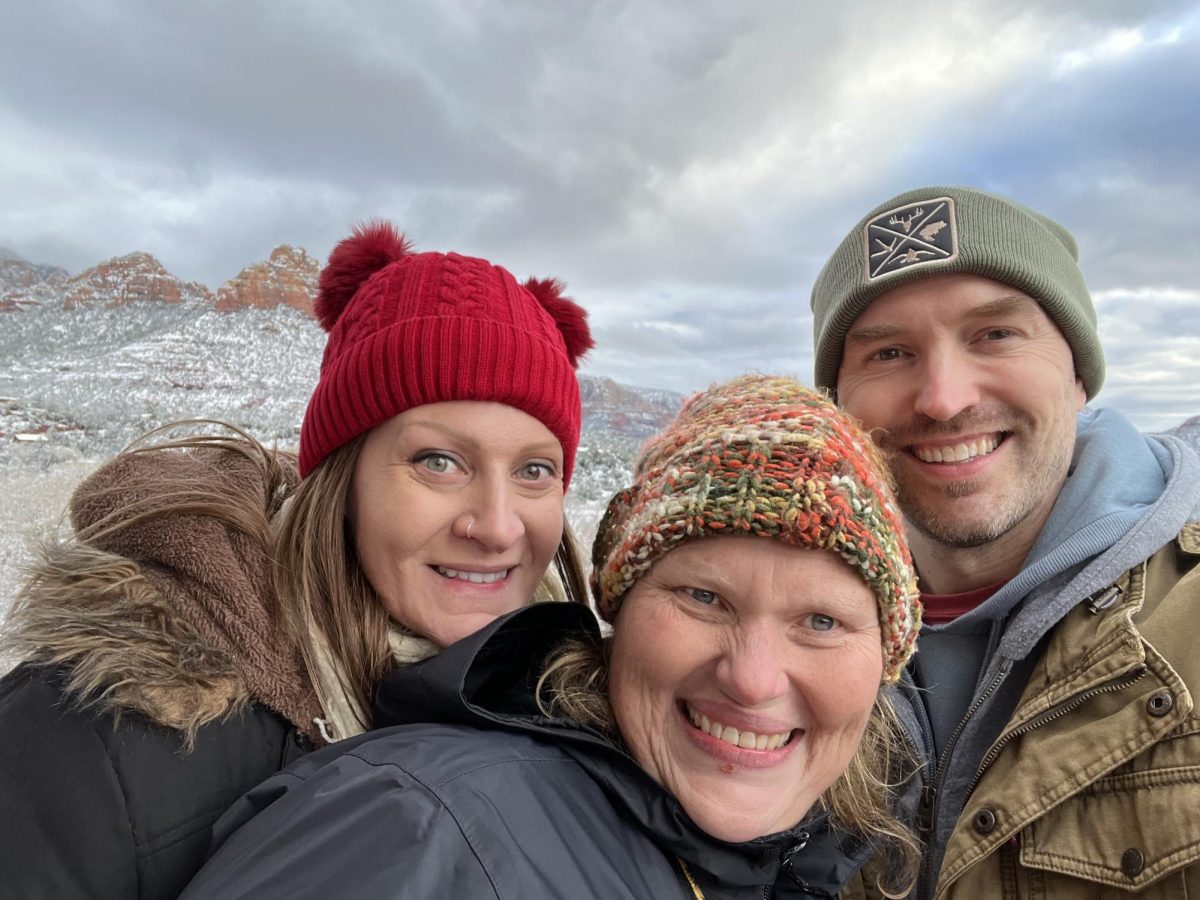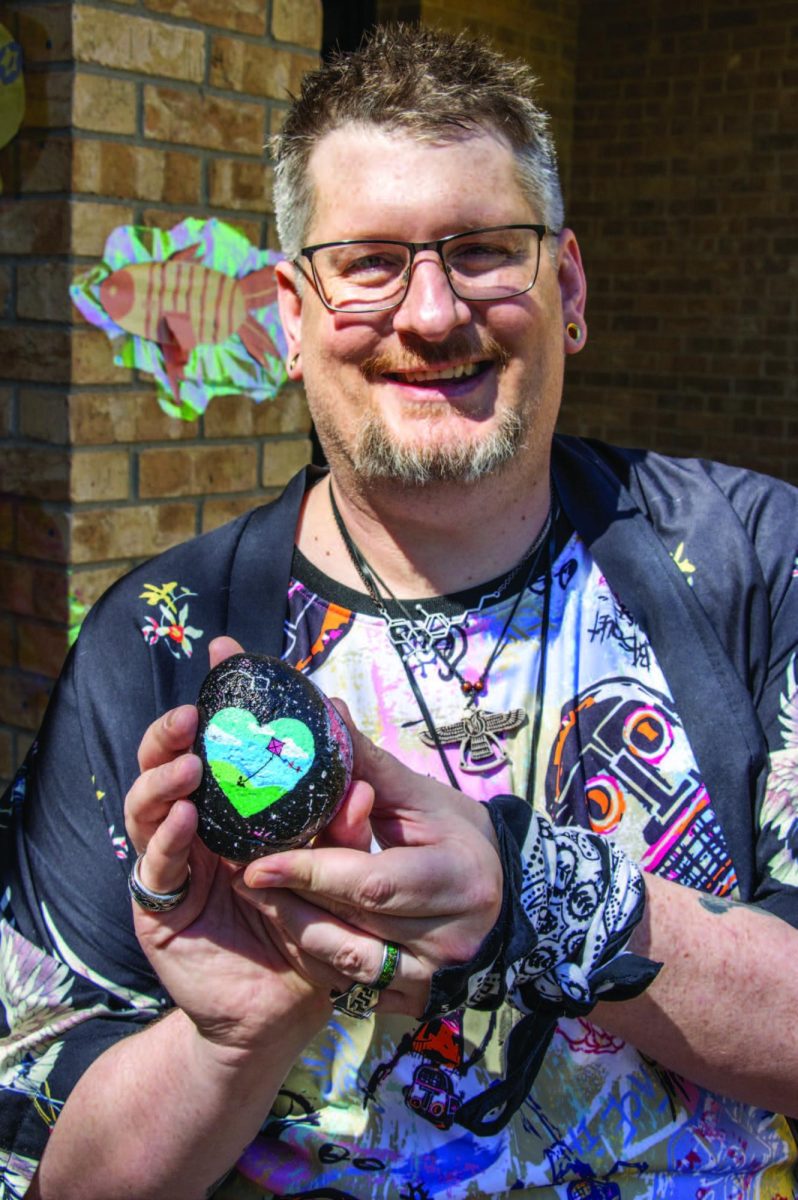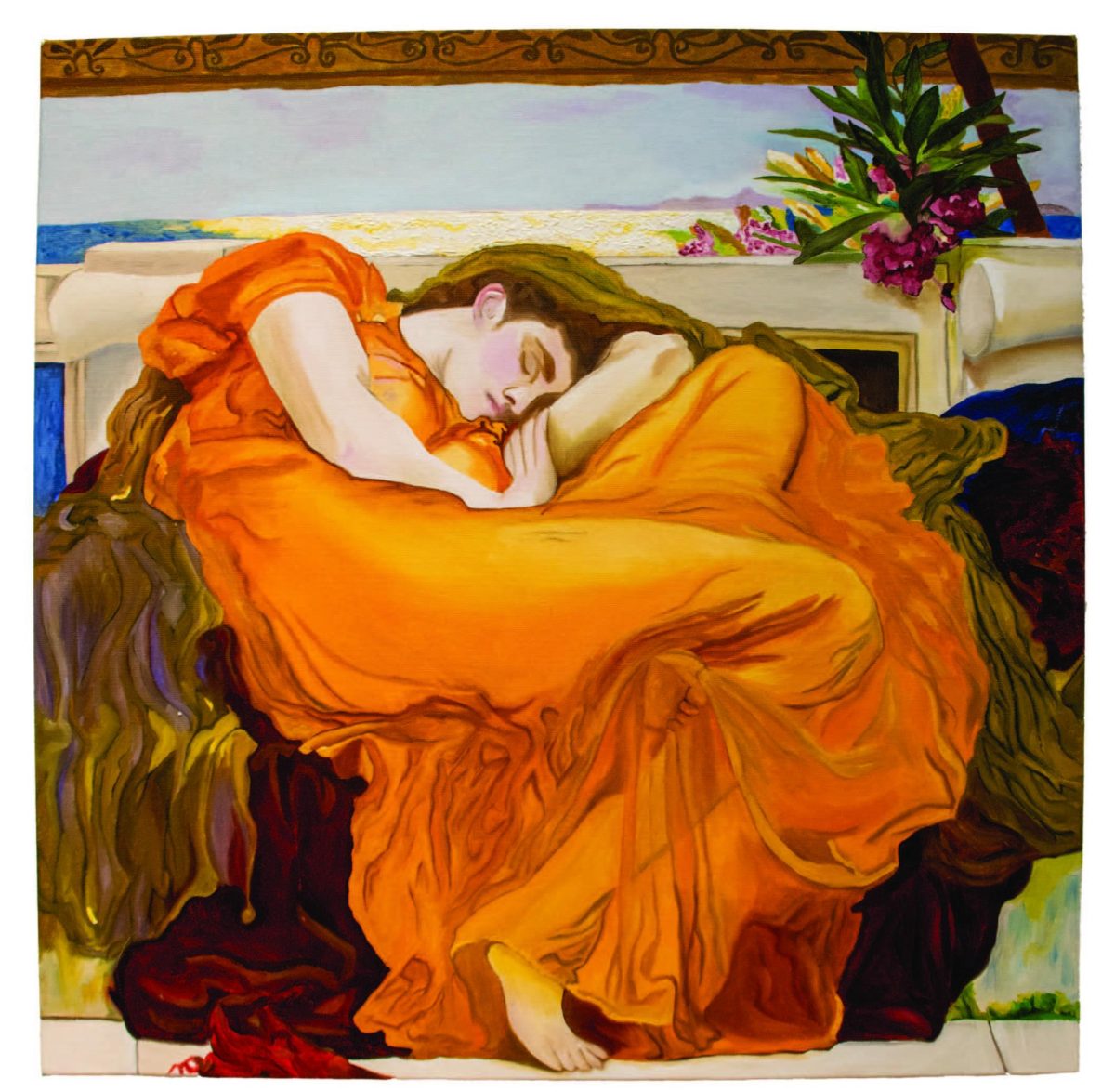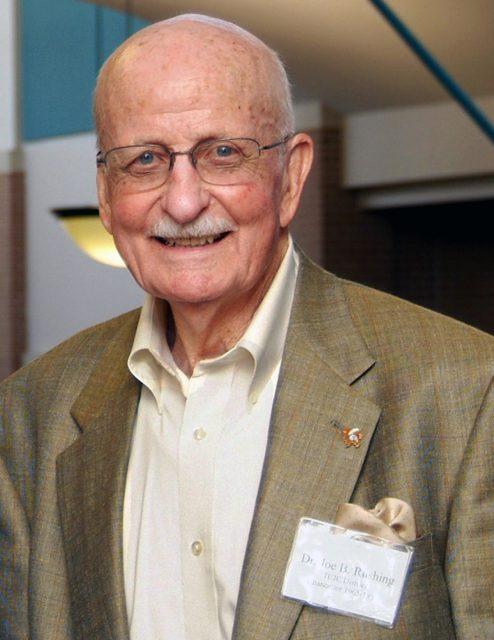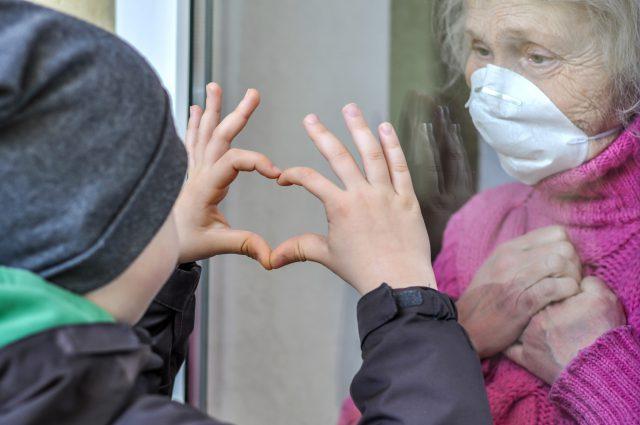Logan Evans
managing editor
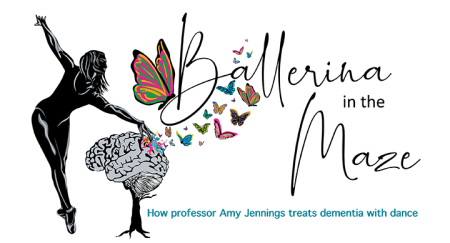
Sometimes, it only takes some movement to light up the labyrinth of the brain.
NW dance professor Amy Jennings understands this. She’s spent the last seven years researching dance as therapy for dementia, how music and motion can spark the memory and wake the body. She teaches regular classes to people living with dementia and hopes to use what she’s learned to illuminate cloudy minds.
“Dementia is scary,” Jennings said. “But I always talk about the beautiful windows that come through with it.”
In a recent therapy session for dementia support group Friday Friends, Jennings warmed up by swaying her arms to the sigh of ballet keys over speakers. Around her, a small crowd of fragile hands and aging faces followed suit.
Because of the confusion a person living with dementia can experience, the body tends to cave in, Jennings said. She believes that starting a session with wide, outward movements helps to mend that.
“I usually teach with a lot of imagery,” she said. “Lifting your arms as wide as the ocean. Lifting your hands as high asthe heavens.”
After warming up, Jennings introduces time-specific music to her classes. Music is closely tied to memory, so pulling from different eras is a good way to find a connection — if only for a moment. Jennings recalls a group of older men who failed to move until she played them aJames Brown song.
“They were on fire,” she said. “But then it came off and if I put something else on, we were done.”
In the last Friday Friends session, Jennings began with disco. A silver-haired man in the front row followed Jennings with stilted movements. Bouncing from the collar of his denim jacket was a small name tag that read, “Roger.”
The song ended and the man named Roger was quiet. His wife and caretaker Mary Jane reminisced about a disco she attended in the late 1970s.
Then, from his silence, Roger began to sing. It was a low, resonant sound, like the simple act of moving had stirred something deep within him.
“Over here, over there. Send the word, send the word to beware!”
The words were not from the disco song. They were lyrics to the military marching chant “Over There,” popular in the middle 20th century. Mary Jane smiled with a gleam in her eye.
“He sang in the army,” she said.
For the next few minutes, Jennings and the group danced along to the chugging tune of “Over There.”
“You’re always trying to meet them where they are,” Jennings said. “That’s what I learned with my mom.”
Jennings began her journey with dance and memory loss in 2014 when her mother was diagnosed with temporal lobe dementia. Drawing from the experience, she choreographed the 17-minute dance piece “Beauty of Dementia’’ to be performed by her TCC students.
The performance evokes the process of memory loss, the fear, anxiety and hidden euphoria that comes with it. It begins with a single dancer on a dark stage, flailing to a discordant piano, and ends with that dancer surrounded by a group of others — a visual representation of loose memories.
Jennings said those living with dementia often revert to a childlike state of mind. In the program pamphlet for “Beauty of Dementia,” she writes of her mother, “the sweet unfolding of a soft soul emerges.”
Jennings credits her mother with inspiring her to take up dancing in the first place. As a child, her mother learned from a traditional Russian ballet teacher. Despite a hazy mind, she clings to that memory.
“My mom was a teacher,” Jennings said. “But all these years later, she references herself as a ballet dancer.”
With dementia, fragments of the distant past will often linger the longest.
Shelly Young, program manager for the Alzheimer’s Association North Central Texas Chapter, said dementia is more complex than simple memory loss. Various other cognitive skills suffer, including the ability to vocalize feelings.
“Thoughts become really muddled,” Young said. “There’s a level of confusion you often see.”
For that reason, Young said groups like Friday Friends — who are sponsored by the Alzheimer’s Association — are important for people living with dementia and their caretakers to have a social space with understanding.
Jennings tailors her dance therapy to whichever stage of dementia a given class is living with. Some are extremely lucid and able to dance standing up. Others are in wheelchairs and may need help moving their arms and legs. Either way, Jennings works with the understanding that something still lives beneath the foggiest of eyes.
“It’s really phenomenal to know what the body still holds,” Jennings said. “What the memory still holds.”
In her classroom, Jennings gathered her things while the Friday Friends social group moved on to their next activity — arts and crafts. Handpicked leaves and scraps of bark were spread out on a table next to bottles of glue. The group worked in the back of the room over coffee and cake.
But not the man named Roger.
Still sitting in the front row, Roger sang under his breath that old army marching song.
“We’ll be over, we’re coming over, and we won’t be back till it’s over, over there.”






